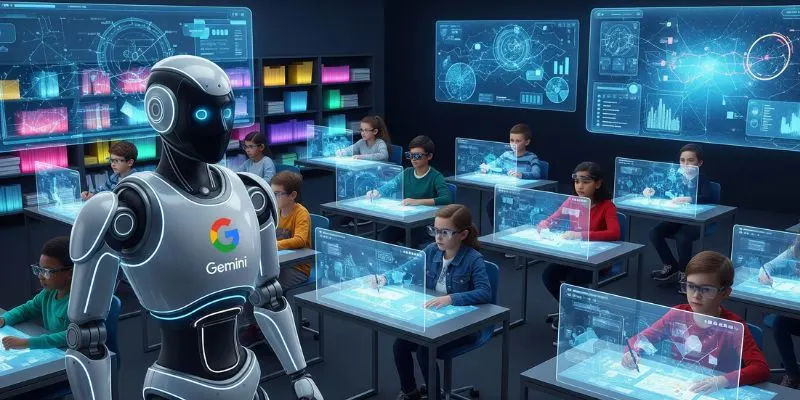How Is Google Challenging ChatGPT and Revolutionizing AI Tutoring?
In a bold move to redefine AI-driven education, Google unveiled Guided Learning within their Gemini AI assistant. This isn’t just another update—it’s a direct response to OpenAI’s much-hyped ChatGPT Study Mode, which debuted just days earlier. Instead of simply giving students direct answers, Guided Learning turns Gemini into a digital tutor that walks learners through complex topics step-by-step, using interactive visuals, custom quizzes, and tailored explanations.
The new feature is all about transforming students from passive information consumers into active critical thinkers. Guided Learning adapts explanations to each user’s needs, using images, diagrams, and even YouTube videos to create engaging study sessions. It’s Google’s answer to growing criticism that AI tools like ChatGPT make it too easy to cheat or bypass real learning.
What Makes Google's Guided Learning and ChatGPT Study Mode Different?
OpenAI’s Study Mode set a new bar by employing the Socratic method—guiding students with questions instead of giving away answers. Meanwhile, Google’s Guided Learning aims to go even further, making learning more interactive by:
Deconstructing problems into smaller, manageable steps.
Personalizing the pace and depth of explanations.
Offering practice quizzes and homework breakdowns.
Integrating sounds, images, and videos for multimodal learning.
While both platforms were built in collaboration with educators and students, Google’s deep integration with its own apps—like Docs, Gmail, and Drive—gives it an edge in seamless workflow for assignments and research, and its content can be especially strong for academic research or large document analysis.
How Big Is Google's Commitment to AI Education?
Beyond software, Google’s education ambitions are massive. The company has pledged a staggering $1 billion over three years to fund the Google AI for Education Accelerator, a program providing free artificial intelligence (AI) skills training and Google Career Certificates to all U.S. college students. Over 100 universities—including Texas A&M and the University of North Carolina—are already partners, receiving funding, cloud credits, and access to advanced tools like Gemini 2.5 Pro.
This is part of Google’s wider vision: making cutting-edge AI tools accessible to the next generation of leaders and professionals—especially as the vast majority of students already use generative AI tools regularly.
What Do Students Get with Google AI Pro for Free?
Eligible students (aged 18+) in the US, Japan, Indonesia, Korea, and Brazil can now claim 12 months of Google AI Pro totally free, a package valued at over $200 for the year if paid monthly. This premium plan opens up:
Gemini 2.5 Pro for homework help, research, and question breakdowns.
Deep Research to synthesize and organize sources.
NotebookLM, an AI-powered writing and study assistant.
Veo 3 Fast video generation for creative projects.
2TB of cloud storage.
Direct integration of AI help inside Google Workspace tools.
Sign-up is simple if you register by October 6, 2025, and verification uses .edu email or student status through SheerID.
Why Is the AI Education Arms Race Escalating Now?
It’s not just Google and OpenAI making moves in 2025. Microsoft recently committed $4 billion to global AI education and training, aiming to reach 20 million people worldwide. The reasoning is clear: today’s students are the first generation of “AI natives,” and whichever platform they start with is likely the one they stick with in their careers.
Adoption rates confirm the trend—over 86% of students globally now use AI tools for their studies, up from around two-thirds just a year ago. The main draws? Time saved, higher work quality, and personalized support.
Yet, there are real concerns: risks of academic misconduct, AI “hallucinations,” and the need for skills to use these tools wisely. Universities are quickly developing new policies, but the march toward AI-driven education seems unstoppable as the market heats up.
How Will This Shape the Future of Learning for Students?
The competition is no longer about who can answer questions faster—it’s about who builds the best AI learning companion. With guided study sessions, custom quizzes, and seamless app integration, Gemini and ChatGPT aren’t just answering homework—they’re reshaping education from the ground up.
The coming years will not only see more software innovations but also massive investments as tech giants try to lock in user loyalty early. For students, educators, and future employers, how we teach and learn is about to change forever—driven by the most advanced AI tools the world has ever seen.














